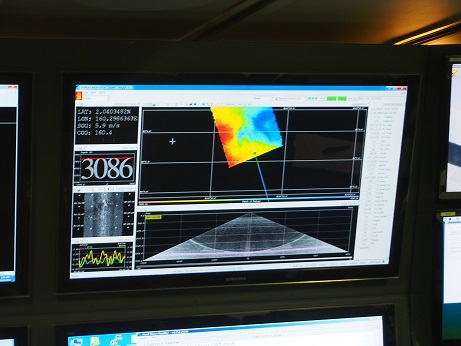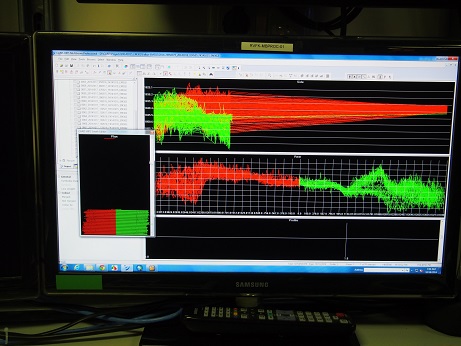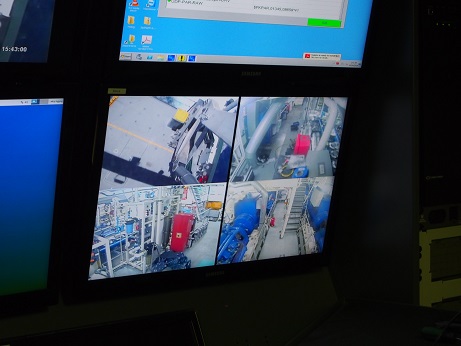As you may or may not know the science we're doing out here on the Ontong Java Plateau is the science of Oceanography, in this case the subset of that which is mapping the sea floor.
Now in the golden olden days of oceanography this would have involved a pile of people up on deck with a long rope and a rock tied to the end. Rock is then lowered into the water, regular marks on the rope let you know how deep it is when the rock hits the bottom, the rock is retrieved and the process is repeated over and over and over again.
The downside of this process is that it's incredibly labour and time intensive and gets relatively few results over time. However the notable upside is that there would be something to photograph. There would be action, drama and excitement. It's also a process that's really easy to understand. It's easy to communicate and it's easy to trust, because it works. No such luck these days. Whilst the science has improved greatly the ease of communication has diminished significantly.
Now in the golden olden days of oceanography this would have involved a pile of people up on deck with a long rope and a rock tied to the end. Rock is then lowered into the water, regular marks on the rope let you know how deep it is when the rock hits the bottom, the rock is retrieved and the process is repeated over and over and over again.
The downside of this process is that it's incredibly labour and time intensive and gets relatively few results over time. However the notable upside is that there would be something to photograph. There would be action, drama and excitement. It's also a process that's really easy to understand. It's easy to communicate and it's easy to trust, because it works. No such luck these days. Whilst the science has improved greatly the ease of communication has diminished significantly.
This is what you get these days. Banks of computer monitors spitting out piles of numbers and trying to render them in a way that means something to the human brain.
It's incredibly detailed, we can get great data going at 10 knots (I know this to be a speed faster than 8 knots but slower than 12 knots, couldn't give you more than that). We can get data while we sleep, eat and write blogs. And it's great. But it really isn't anything too exciting to behold in a blog.
The most exciting piece of drama I could provide is the occasional red flashing box.
Which is a shame. Because it is genuinely exciting!
It's incredibly detailed, we can get great data going at 10 knots (I know this to be a speed faster than 8 knots but slower than 12 knots, couldn't give you more than that). We can get data while we sleep, eat and write blogs. And it's great. But it really isn't anything too exciting to behold in a blog.
The most exciting piece of drama I could provide is the occasional red flashing box.
Which is a shame. Because it is genuinely exciting!
We're getting data out that looks a bit like this. The bottom box shows a cross-section of the sea floor. That's a bit of the sea floor that no-one has ever seen before! It's likely that no one else will come out here for a good while too. This is as close to genuine exploration of the world that it really gets to these days, and it's pretty thrilling to be part of it, even if just for a few weeks.
So for all there is no photogenic excitement for you, there is some very awesome and beautiful data. Schmidt being the awesome Schmidt in a few months you'll also be able to download this data and have a play around too. Sniff around the sea floor and see what you can see! Sure you won't be the first person to see it, but you'll be up there on the list.
So for all there is no photogenic excitement for you, there is some very awesome and beautiful data. Schmidt being the awesome Schmidt in a few months you'll also be able to download this data and have a play around too. Sniff around the sea floor and see what you can see! Sure you won't be the first person to see it, but you'll be up there on the list.
For anyone wanting a break from their computing and data crunching there's always the CCTV. A nice little window out into the real workings of the ship with it's little dramas and secrets. Not to mention the beautiful little waves lapping the boat.



 RSS Feed
RSS Feed
